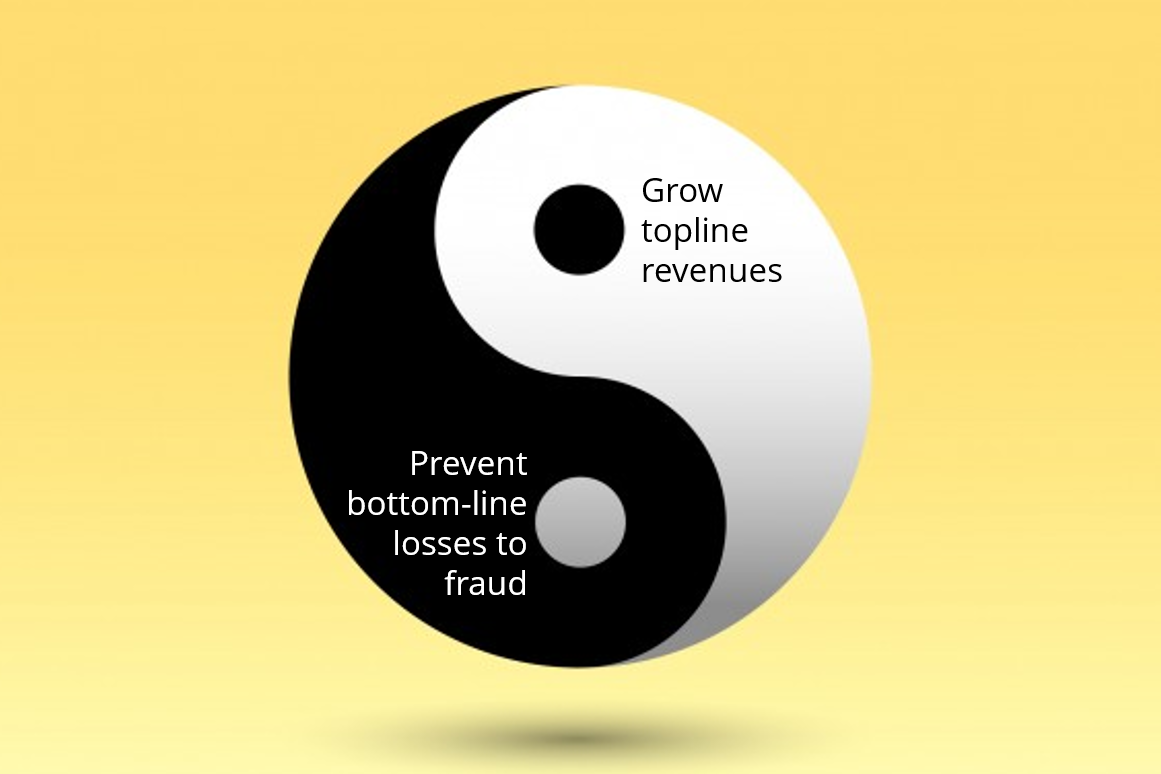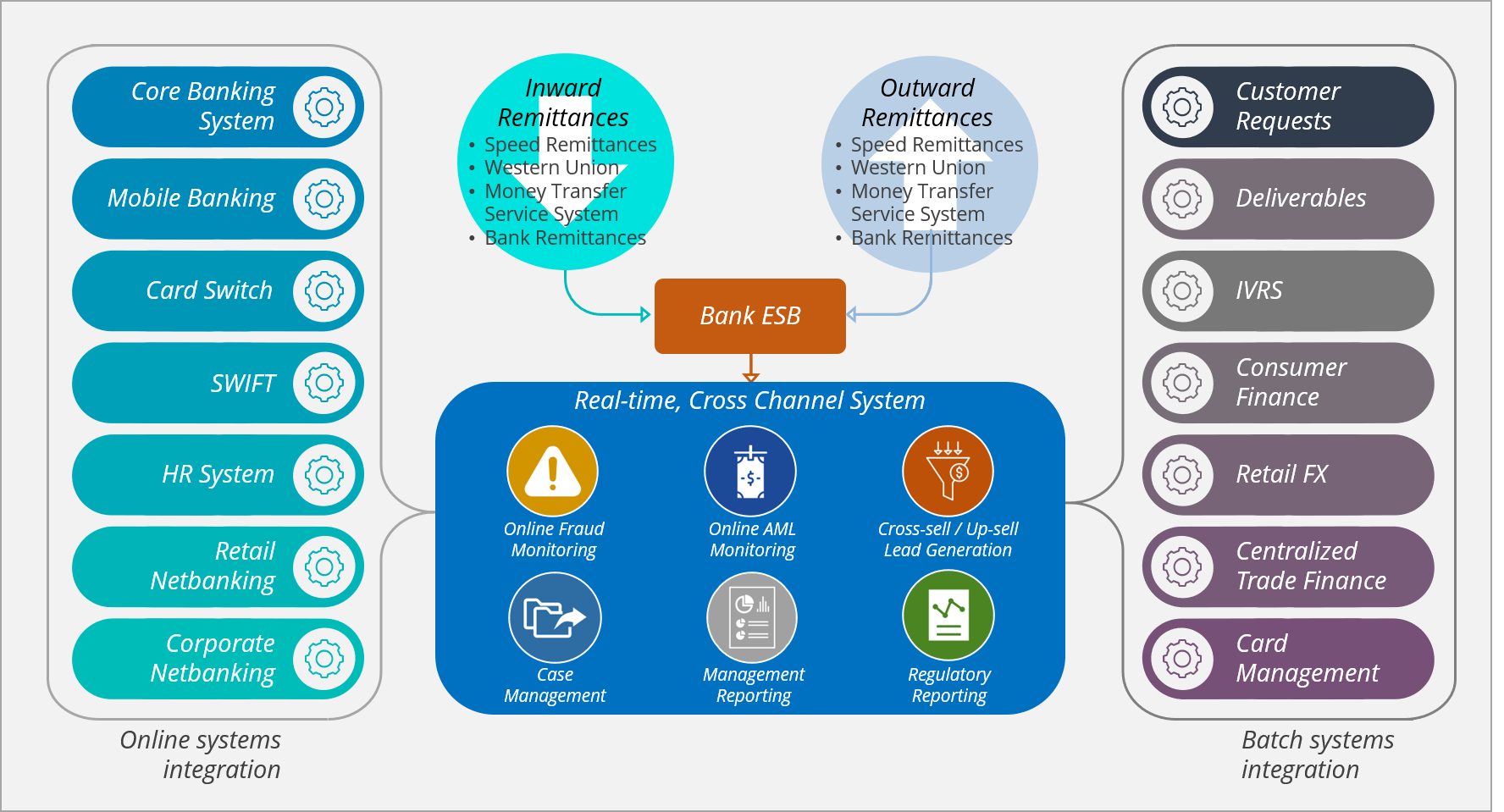 Image courtesy: Freepik
Image courtesy: Freepik
In Chinese philosophy, yin and yang (also yin-yang or yin yang, ‘dark-bright’) explains how seemingly opposite forces may actually be complementary, interconnected, and interdependent in the natural world.
This intriguing idea actually applies perfectly in the context of banking, if we were to see the yin as saving money (from losses), and the yang as making money (from sales).

Banks can monetize their anti-fraud solution for generating revenues
The fundamental idea is that the very same investment in real-time decisioning for monitoring, detecting and preventing fraud can also be monetized for earning additional revenues.
Imagine an intelligent system that studies customers’ behavioral patterns to detect fraud, is also creating precise personas for the bank’s marketing teams to target campaigns to. The same real-time, context-aware logic/approach used to combat cross-channel fraud can also help enable intelligent, hyper-precise targeted and contextual customer engagements.
At the heart of the idea lies the fact that banks have the ‘soul’ of the customer.
Banking is the only industry where the entire life of the customer flows through it. A bank knows how much its customers earn, where they live, where they travel to, how much they spend, who’s part of the family, whether they own their home, even how much fuel they put in their vehicle every month.

Banks have the customers’ ‘soul’, yet they don’t fully monetize the resident wisdom
No other industry (not even telco or retail or OTT platforms) has this extraordinary privilege of having a 360-degree view of a customer’s life. Therefore, only banks have the advantage and ability to actually convert this ‘resident wisdom’ to their benefit.
A true real-time, enterprise-wide, cross-channel fraud management solution ensures that every banking transaction is available in-memory and in real-time.
But since only a relatively small percentage of transactions are fraudulent and since the data is available in the system memory, the bank can run positive scenarios in real-time, after having assigned fraud risk to certain transactions, during the negative-scenario test-run.
The solution can therefore use the same data captured per transaction and analyze the spending and behavior patterns to throw up potential cross-sell and up-sell scenarios in absolute real-time. Precise data analytics on behavior patterns helps create intelligent and efficiently targeted customer interactions and campaigns to grow topline.
So, while the anti-fraud solution helps the bank’s larger enterprise fraud management initiative with:
- a unified case management system for fraud/AML investigation with a 360-degree view of behavior across products and channels
- extreme real-time, context-aware, fraud detection and prevention
- monitoring financial and non-financial transactions of customers, accounts, users, and employees across branch and channel transactions in real-time to detect suspect transactions and respond with the right decision in real-time and generate alerts for investigation.
. . . it can also be used for:
- motivating customers to use POS/E-com channels for digital transactions for generating extreme real-time, ‘in the moment of truth’ cross-sell and up-sell alerts.
- identifying customers who usually travel internationally and offering them custom products in real-time.
- monitoring salary accounts to identify increase in salary credits or a drop in usage of the accounts
So altogether the bank benefits from:
- a smart, intelligent, extreme real-time solution that manages fraud detection/prevention as well as enables customer revenue maximization.
- a non-invasive, bolt-on solution that integrates seamlessly with source systems and reduces TCO.
- lowered cost of compliance of fraud and AML regulatory requirements.
- a single, unified platform that helps protects the bottom-line as well as grows topline.
How does it work?
When the transaction hits the system, it forks, the fraud and AML engine is running the negative scenarios, while the same computing space is also being used to run positive scenarios for cross-sell and upsell.
Such behavior patterns are automatically picked up for a campaign targeted towards these customers.
Additionally, the system can be used to deliver merchant offers in real-time. For example, if based on a card transaction, the system learns that a customer is shopping at a specific location, it can send him/her an offer, (e.g. 20% off) from another merchant a nearby location.
Insights from the system are picked up by a specialist campaign management system that further enriches the information with its own data to come up with the right offer.
It works near real time by running batches every few minutes. If a customer is entitled to an offer (the bank’s alliances / partnerships sources the offers), then he / she receives a text message, a mobile banking in-app notification, or an email.
A leading innovative bank that tried this approach, not only prevented more than $ 9 million in potential fraud, but also delivered over 1 million notifications across various channels such as Internet Banking, email, SMS, and mobile app push notifications. The bank observed much higher click rates (4 – 5%) and conversion rates (3.5%) for these targeted notifications, than regular messages.

Leading innovator bank used same fraud risk management system to perform real-time cross-sell / upsell
Encouraged by the success, the bank is now contemplating using the same system to aid frontline digital customer engagement, such as performing KYC and enabling customers to open accounts in real-time.
Siloed, channel centric anti-fraud solutions cannot see fraud prevention and revenue generation as 2 sides of the same coin, because they do just what they are built for – monitor/detect/prevent fraud for that particular channel.
Innovative fraud management platforms on the other hand have the ability to leverage the same context-aware, real-time decisioning to enable real-time customer cross-sell and upsell.
They can handle exceptionally large data volumes across multiple channels and source systems in real-time, and process transactional as well as non-transactional events in real-time and generate alerts in real-time that can be leveraged for both fraud management as well as revenue enhancement.
This helps banks because that what is meant to protect/save money (curb fraud losses) is also being used to make money (upsell / cross-sell).
Having the same common platform for both critical systems also helps a bank streamline its IT operations in terms of common system interfaces for consistent data quality, maintenance and reduced TCO.
If banks can view their topline and bottom-line as the yin and yang of their business risk management strategy, then a single solution that helps achieve both, becomes the proverbial one stone to target two birds.

